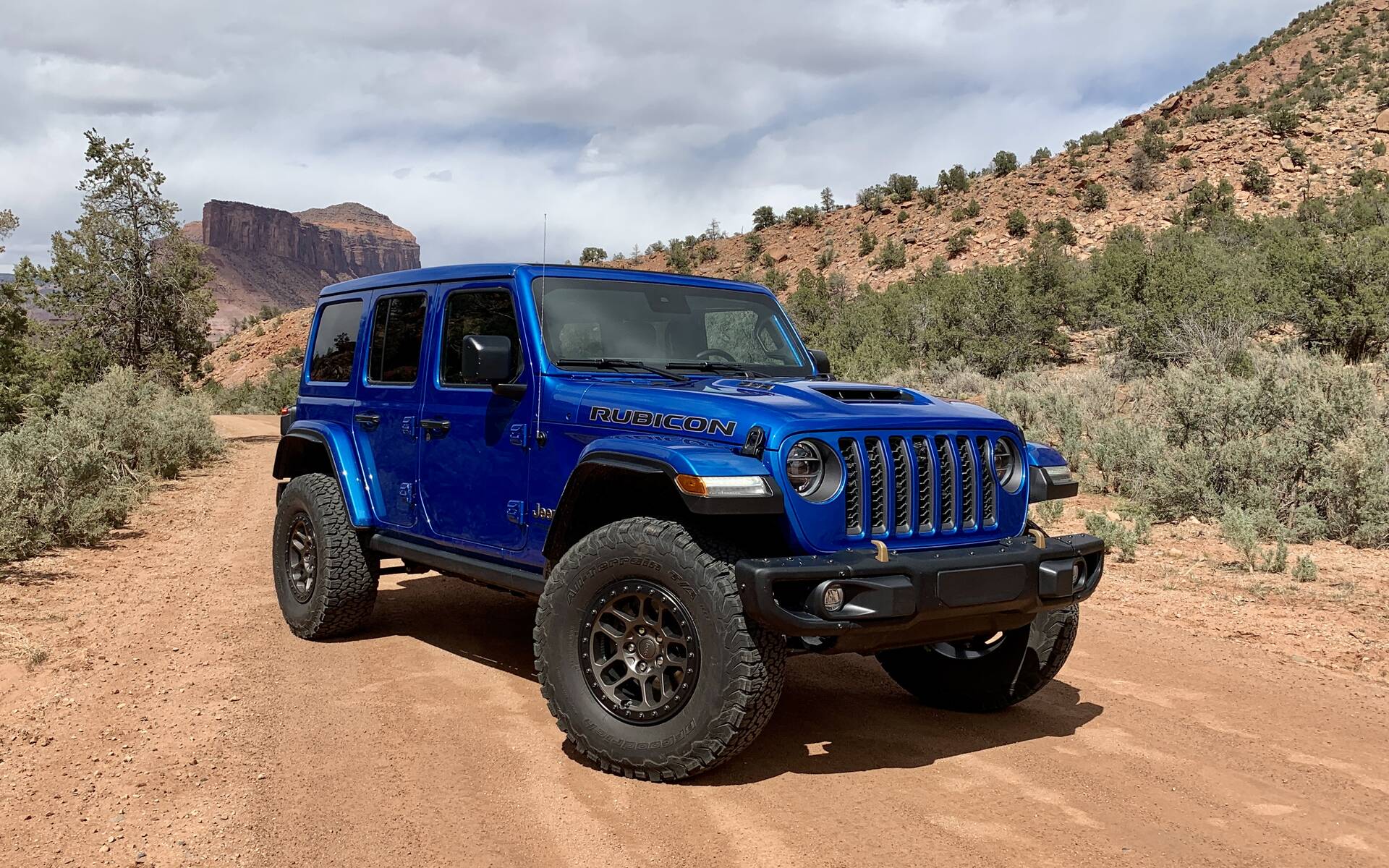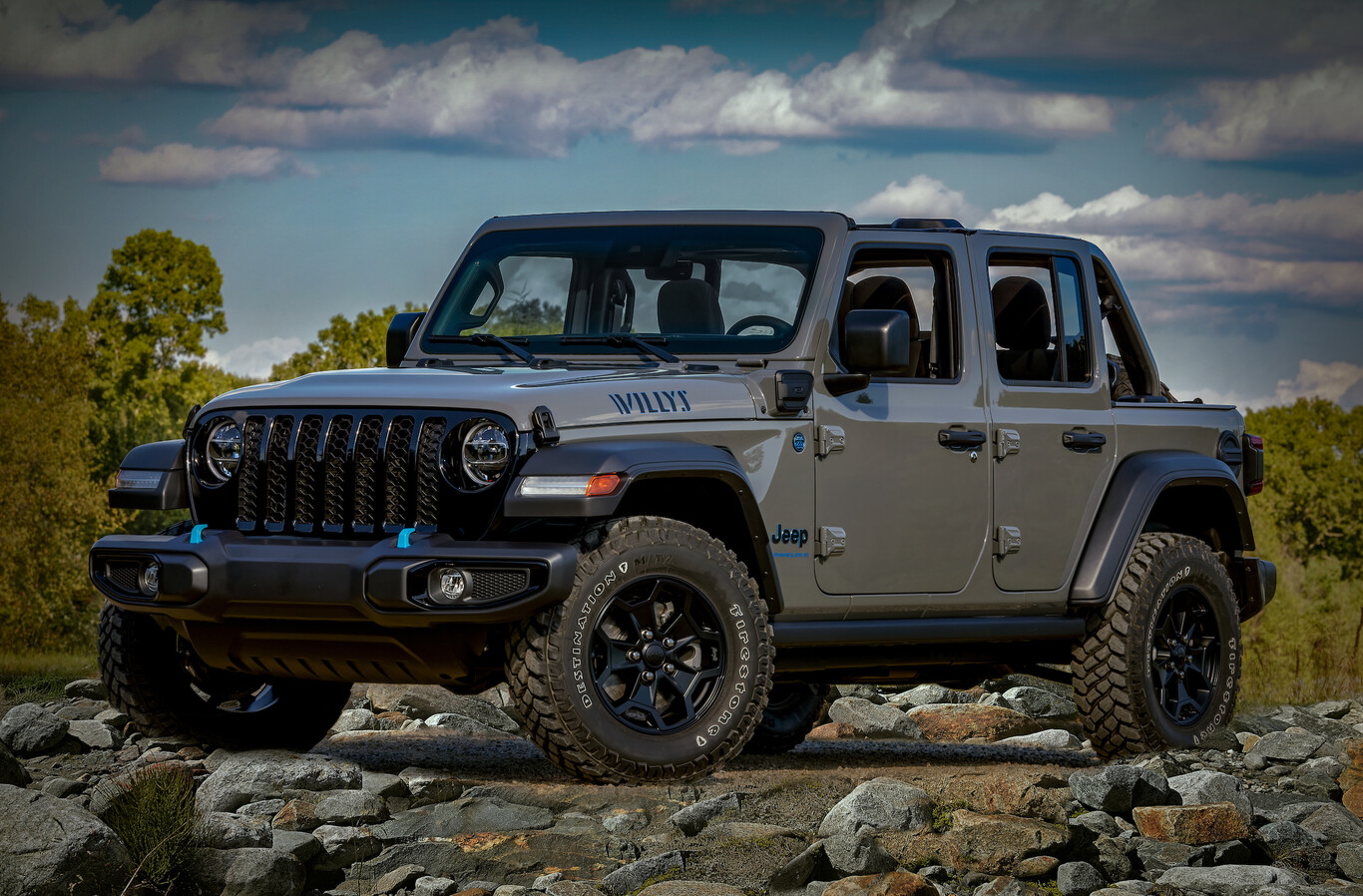Jeep 242 Transfer Case For Sale: Your Ultimate Guide to Unlocking Versatility
Jeep 242 Transfer Case For Sale: Your Ultimate Guide to Unlocking Versatility jeeps.truckstrend.com
For any serious Jeep enthusiast, the transfer case is the heart of its four-wheel-drive capability. It’s the unsung hero that seamlessly transfers power from the transmission to both the front and rear axles, allowing your rig to conquer everything from snowy roads to rugged trails. Among the various transfer cases found in iconic Jeeps, the New Process Gear (NP) or New Venture Gear (NVG) 242 stands out as a highly sought-after unit, particularly for its unique blend of on-road civility and off-road prowess.
If you’re searching for a "Jeep 242 Transfer Case For Sale," you’re likely looking to replace a failing unit, upgrade from a less versatile model like the NP231, or perhaps embarking on a custom build. This comprehensive guide will delve into everything you need to know about the NP242, from its core features and benefits to critical purchasing considerations, installation tips, and common maintenance practices, ensuring you make an informed decision.
Jeep 242 Transfer Case For Sale: Your Ultimate Guide to Unlocking Versatility
What is the Jeep NP242 Transfer Case?
The NP242, often referred to as the "Selec-Trac" transfer case, is a part-time and full-time four-wheel-drive unit that was primarily found in the Jeep Cherokee (XJ) from 1987-2001 and the Jeep Grand Cherokee (ZJ) from 1993-1998. It’s a robust, chain-driven transfer case celebrated for its versatility, offering a broader range of driving modes compared to its more common sibling, the NP231 (Command-Trac).
The NP242 typically offers five distinct operating modes, allowing drivers to adapt to varying conditions:
- 2WD High (2H): Power is sent only to the rear wheels, ideal for dry, paved roads and maximizing fuel economy.
- 4WD Part-Time (4PT): Power is split equally between the front and rear axles through a locked differential. This mode is for off-road use, loose surfaces, or extremely slippery conditions where tire slippage can occur. It should NOT be used on dry pavement.
- 4WD Full-Time (4FT): This is the NP242’s signature mode. It uses a viscous coupling or an open differential to allow for speed differences between the front and rear axles, making it safe for use on any surface, including dry pavement. It’s perfect for mixed conditions like light snow, rain, or variable terrain, providing enhanced traction without driveline binding.
- Neutral (N): Disconnects the drivetrain for flat-towing behind another vehicle.
- 4WD Low (4L): Engages a lower gear ratio (typically 2.72:1) for maximum torque multiplication, ideal for slow-speed crawling, steep climbs, or pulling heavy loads in challenging off-road scenarios.

Why Choose a Jeep NP242 Transfer Case?
The primary allure of the NP242 lies in its "4WD Full-Time" capability. Unlike the NP231, which is strictly a part-time system, the 242’s full-time mode allows you to drive on dry pavement without risking driveline bind. This is a significant advantage for those who frequently encounter mixed weather conditions (rain, snow, ice) or transition between paved roads and off-road trails. You can leave it in 4WD Full-Time for enhanced safety and traction without worrying about damaging your drivetrain.
Beyond the full-time option, the NP242 is renowned for its:
![]()
- Versatility: Offers options for every driving scenario, from highway cruising to serious off-roading.
- Reliability: Generally a very durable unit, capable of handling significant abuse when properly maintained.
- Direct Swap Potential: For many XJ Cherokees and ZJ Grand Cherokees, it’s a direct bolt-in replacement for the NP231, making it a popular upgrade.

When to Consider a Replacement or Upgrade
Knowing when to look for a "Jeep 242 Transfer Case For Sale" is crucial. Here are common indicators:
- Grinding or Clunking Noises: Especially when engaging or disengaging modes, or during acceleration/deceleration.
- Difficulty Shifting: Hard to get into 2H, 4PT, 4FT, or 4L, or the lever feels excessively stiff.
- Leaking Fluid: Often from the output shaft seals, input shaft seal, or case halves. Low fluid can lead to catastrophic failure.
- Failure to Engage/Stay in Mode: The transfer case won’t engage a specific mode, or it pops out of gear under load.
- Vibrations: Unusual driveline vibrations, particularly at certain speeds, could indicate internal wear.
- Burning Smell: Overheating due to low fluid or excessive internal friction.
Beyond failure, many choose to upgrade to an NP242 from an NP231 to gain the invaluable "4WD Full-Time" mode, enhancing their vehicle’s safety and capability in varied driving conditions.
Where to Find a Jeep 242 Transfer Case For Sale
When sourcing an NP242, you have several avenues, each with its own pros and cons:
-
Remanufactured Units:
- Pros: Often come with a warranty, thoroughly inspected, worn components replaced, sometimes include upgrades (e.g., heavy-duty chain, improved bearings). Best option for reliability.
- Cons: Highest cost.
- Where to Find: Specialized driveline shops, online automotive parts retailers (e.g., Quadratec, Morris 4×4, RockAuto, or dedicated transfer case rebuilders).
-
Used Units (Salvage Yards/Private Sellers):
- Pros: Most affordable option.
- Cons: "As-is" condition, no warranty, unknown history, potential for hidden problems. Requires careful inspection.
- Where to Find: Local salvage yards (pick-and-pull), online classifieds (Craigslist, Facebook Marketplace), dedicated Jeep forums, eBay.
-
New Units:
- Pros: Brand new, zero wear.
- Cons: Extremely rare for the NP242, as production has long ceased. If found, likely a remanufactured unit labeled as "new," or incredibly expensive NOS (New Old Stock).
Key Considerations Before Buying
Before you commit to a "Jeep 242 Transfer Case For Sale," pay close attention to these critical factors:
- Donor Vehicle Compatibility: While most XJ and ZJ 242s are similar, subtle differences exist.
- Input Spline Count: This is paramount! The NP242 was designed to mate with various transmissions. Early models (e.g., those paired with the AX-15 manual transmission or early AW4 automatics) often had a 21-spline input shaft. Later models (paired with most AW4 automatics, NV3550 manual) typically used a 23-spline input shaft. You MUST verify your transmission’s output shaft spline count before purchasing to ensure compatibility.
- Speedometer Gear: Older XJs used a mechanical speedometer cable, while newer ones (and ZJs) used an electronic sensor. Ensure the donor 242 has the correct type for your vehicle or that the necessary conversion parts are available.
- Output Shaft: Most stock 242s come with a slip yoke output. If you’re lifting your Jeep significantly, you might consider a Slip Yoke Eliminator (SYE) kit, which converts the output to a fixed yoke, reducing driveline vibrations. An SYE might be installed on a used unit, or you’ll need to purchase one separately.
- Condition (for used units):
- Fluid Check: If possible, check the fluid. Clear, red fluid is good. Milky or dark, burnt-smelling fluid indicates problems.
- Noises: Spin the input/output shafts by hand. Listen for grinding, clunking, or excessive play.
- Chain Play: A common wear item. Excessive chain slack (often indicated by a clunk when quickly changing direction from forward to reverse) can be a sign of a worn chain.
- Case Integrity: Inspect for cracks, especially around mounting points.
- Shift Mechanism: Test the shifter if it’s still attached to ensure it moves smoothly through all detents.
- Warranty: Always inquire about a warranty, especially with remanufactured units. A good warranty (e.g., 1-3 years) provides peace of mind.
- Core Charge: Many remanufacturers require a core (your old transfer case) or charge a deposit until you return it. Factor this into your budget.
Installation Tips and Best Practices
Installing a transfer case can be challenging but is manageable for a skilled DIY mechanic.
- Safety First: Always use jack stands and proper lifting equipment. Disconnect the battery.
- Fluid Drainage: Drain the old transfer case fluid before removal to minimize mess.
- Support Transmission: Use a transmission jack or sturdy support under the transmission while the transfer case is removed.
- Driveshafts: Mark driveshaft orientation relative to the yokes to ensure proper balance upon reinstallation.
- Input Shaft Alignment: Carefully align the transfer case input shaft with the transmission output shaft splines. Do NOT force it; it should slide in smoothly.
- Mounting Hardware: Use new lock washers and torque all bolts to factory specifications.
- Fluid Type: The NP242 typically uses ATF+4 (Automatic Transmission Fluid) or Dexron/Mercon III. Always check your vehicle’s service manual or the transfer case tag for the correct fluid type and capacity. Using the wrong fluid can lead to premature failure.
- Linkage Adjustment: Ensure the shift linkage is properly adjusted so all modes engage fully and smoothly.
- Test Drive: After installation, test all modes in a safe, open area (e.g., a dirt road for 4PT and 4L) before driving on public roads.
Maintenance for Longevity
To ensure your NP242 transfer case provides years of reliable service, adhere to these maintenance practices:
- Regular Fluid Changes: This is the single most important maintenance item. Change the fluid every 30,000 miles or every 3 years, whichever comes first. This extends the life of the chain, bearings, and planetary gears.
- Check for Leaks: Periodically inspect the transfer case for any signs of fluid leaks from seals or case halves. Address leaks promptly.
- Inspect Driveshafts: Check U-joints and driveshaft balance regularly, as vibrations can put undue stress on the transfer case.
- Proper Shifting: Always shift into 4WD Low from a complete stop with the transmission in neutral. Avoid aggressive shifting between modes.
Common Upgrades and Modifications
While the NP242 is robust, a few popular modifications can enhance its performance, especially for lifted Jeeps:
- Slip Yoke Eliminator (SYE) Kit: Essential for lifted Jeeps (typically 3 inches or more) to correct driveline angles and eliminate vibrations often caused by the factory slip yoke design. This also makes the rear driveshaft less prone to separation during extreme suspension articulation.
- Heavy-Duty Chain: For those who frequently engage in demanding off-roading, a heavier-duty chain can provide increased strength and durability.
Jeep 242 Transfer Case For Sale: Estimated Price Table
Prices can vary significantly based on condition, warranty, and seller. This table provides a general estimate.
| Type of NP242 Transfer Case | Estimated Price Range (USD) | Key Features / Notes | Warranty |
|---|---|---|---|
| Remanufactured Unit | $700 – $1,200+ | Thoroughly rebuilt with new wear parts, often includes upgrades. May require core return. | 1-3 Years |
| Used (Inspected/Tested) | $300 – $600 | From a reputable dismantler or private seller who has tested the unit. Condition verified as "good." | Limited/None |
| Used (As-Is/Salvage) | $100 – $300 | Found at U-Pull-It yards or online classifieds with unknown history/condition. Buyer beware. | None |
| Core Charge | $150 – $300 | Additional deposit required by remanufacturers if you don’t provide an immediate core. Refunded upon return of your old transfer case. | N/A |
| Installation Labor | $300 – $800 | Professional installation cost (varies by shop and region). DIY saves this. | N/A |
| SYE Kit (If Needed) | $250 – $500 | Separate purchase for lifted Jeeps to eliminate vibrations and improve driveline angles. | Varies |
Prices are estimates and can fluctuate based on market demand, location, and specific seller.
Frequently Asked Questions (FAQ)
Q1: What’s the main difference between the NP231 and NP242 transfer cases?
A1: The key difference is the "4WD Full-Time" mode on the NP242, which allows safe use on dry pavement due to its internal differential. The NP231 only offers "Part-Time" 4WD, which locks the front and rear axles together and should only be used on loose or slippery surfaces to prevent driveline binding.
Q2: How do I know if I have an NP231 or NP242?
A2: Check the shift lever. If it has "2WD, 4-Part Time, N, 4-Low," it’s likely an NP231. If it has "2WD, 4-Full Time, 4-Part Time, N, 4-Low," it’s an NP242. Also, a tag on the back of the transfer case typically indicates "NP231" or "NP242."
Q3: Can I swap an NP242 into a Jeep that originally came with an NP231?
A3: Yes, for most XJ Cherokees and ZJ Grand Cherokees, it’s a relatively straightforward swap. The main considerations are matching the input spline count (21 vs. 23) to your transmission and potentially swapping the speedometer gear. The shift linkage might also need minor adjustment or a different bracket.
Q4: What fluid does the NP242 take?
A4: Most NP242 transfer cases require ATF+4 (Automatic Transmission Fluid) or Dexron/Mercon III. Always consult your vehicle’s owner’s manual or the tag on the transfer case itself for the exact specification and capacity.
Q5: What are common problems with the NP242?
A5: Common issues include a stretched transfer case chain, worn input/output shaft bearings, leaking seals (especially the output shaft seal), and occasionally a worn viscous coupler in older full-time units, which can lead to binding or poor power transfer.
Q6: Is buying a used NP242 a good idea?
A6: It can be a cost-effective option, but it comes with risks. Thorough inspection is crucial. If you can’t inspect it yourself, consider buying from a reputable salvage yard that offers a short warranty or a private seller who can demonstrate its functionality. Remanufactured units are generally a safer bet for reliability.
Conclusion
The Jeep NP242 transfer case remains a highly desirable component for its blend of everyday usability and off-road capability, primarily thanks to its unique "4WD Full-Time" mode. Whether you’re replacing a faulty unit or upgrading for enhanced versatility, understanding the nuances of purchasing, installing, and maintaining an NP242 is key to a successful outcome. By carefully considering compatibility, condition, and source, you can confidently acquire a "Jeep 242 Transfer Case For Sale" and unlock the full potential of your beloved Jeep, ensuring many more miles of adventure, on or off the beaten path.


